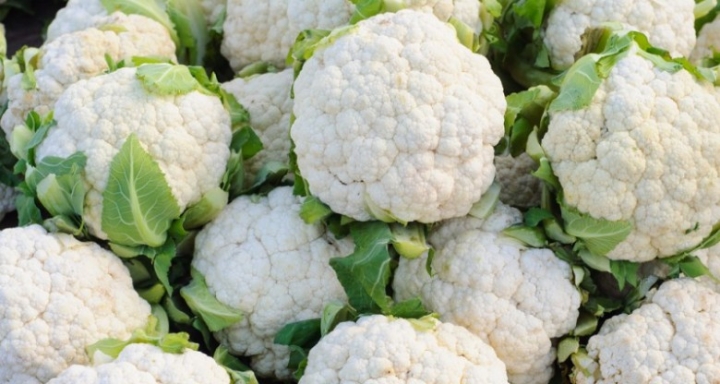One of the most significant winter vegetables grown in India is cauliflower. It originated in Europe and possibly evolved from broccoli. Cauliflower is grown almost everywhere in India. However, the primary states are Bihar, Uttar Pradesh, Orissa, Assam, M.P., Gujarat, and Haryana. It contains many vitamins and minerals essential for human health, including vitamins B and C, protein, and carbs. Cauliflower is cultivated for its edible flowering head, which is used in curries, soups, and pickles.
For cauliflower field planning, you can use tractors from the brand Sonalika Tractor and Massey Ferguson Tractor. If you are cultivating cauliflower for the first time, we have discussed some basic guidelines in the following blog. In addition, the climate, soil, sowing and every other information are included in the blog below.
Climate Requirements For Growing Cauliflower in India by Season
Every vegetable requires different climate conditions to grow well, and here are the climate requirements for growing cauliflower-
- Cauliflower is a cool-season vegetable that grows best in cool, slightly damp climates.
- The ideal temperature varies from 15 to 20 °C on a monthly average. Higher temperatures and longer day lengths are needed for the early varieties.
Soil Requirements for growing Cauliflower
- Cauliflower often is grown in any good soil, from clay to loamy. However, deep loamy soil is preferred. Late-season/summer soils with good moisture-holding capacity are desirable since water stress has a negative impact on curd development.
- Rapidly drying soils are recommended during the rainy season so that cultivation and harvesting tasks can be completed without difficulty.
- The ideal soil pH for maximum production is between 5.5 and 6.0 because it is sensitive to excessive acidity.
- Cauliflower is slightly sensitive to soil and water salt. It is more salt tolerant than lettuce but somewhat less salt tolerant than broccoli. Therefore, irrigation can be done with water that has an EC of 1.3 or below.
Sowing Time
- The ideal time to sow seeds in the nursery is determined by the climate, variety, and temperature required for curd production.
- Three categories are used to group the various cauliflower types. These come in early, main, and late-season kinds.
- From May to August, early-season types are sown and ready to harvest from Sep to Dec. From September through October, main season types are seeded.
- While late-season varieties are planted between October and December and harvested between mid-January and the end of April, they are ready for harvest between December and January.
Seed Rate
- Early-season seed requirements for cauliflower cultivation are 600g–750g/ha, whereas mid and late-season seed requirements are 400g–500g/ha.
Transplanting
- After 4 to 5 weeks, seedlings are ready for transplantation.
- The distance between two plants during planting is determined by soil fertility, cultivation season, and market demand.
- Generally, the spacing between plants in the early season is 45 cm x 45 cm, while 60 cm x 60 cm is maintained throughout the significant and late-season crop.
- Because little and medium-sized cauliflower is in high demand, planting them closer together will provide more cauliflower curds.
- When planting cauliflower, a skilled farmer achieves this result by spacing the plants 30 cm apart and 45 cm from the raw material. Use drip irrigation to increase the yield of cauliflower.
Manure and Fertilizers
- The soil’s fertility determines how much fertilizer and manure a cauliflower crop needs. Before growing cauliflower, soil testing must be done to ascertain the soil’s fertility.
- Apply 150–200 q/ha of farmyard manure to the soil and carefully mix before transplanting the cauliflower crop.
- For the best production, the cauliflower crop typically needs to provide 75 kg of phosphorus, 200 kg of nitrogen, and 75 kg of potassium per hectare.
- When transplanting, 100 kg of nitrogen, 75 kg of phosphate, and 75 kg of potash should be applied. The remaining half of the nitrogen must be given 30 and 45 days after transplanting.
Cauliflower Harvesting
- After sowing, the cauliflower crop is ready to be harvested 90–120 days later.
- The fully developed, white-coloured cauliflower should be harvested and put up for sale right away. If the harvesting is put off, the curds’ hue will turn yellow and lose their thickness and allure. Therefore, it’s crucial to harvest the cauliflower when it’s fully mature.
- Use a knife to cut the stalk down to the curd. Grading should be done based on size, colour, and market need.
- Acceptable temperature Cauliflower can be stored for 3 to 4 days with 85 to 90% humidity and 30 days without.
Yield of Cauliflower
- Cauliflower yield is influenced by the growing season and breed types. Approximately 6-10 t/ha of early varieties are obtained, 12–20 t/ha of midseason varieties, and 20–30 t/ha of late kinds.
- Cauliflower was grown on 426 acres of land in India from 2015 to 2006, and the yield was 8090 MT.
Stay connected with Tractor Guru to learn more about various farming machines Preet tractor, kubota Tractor, and other commercial farming needs.

